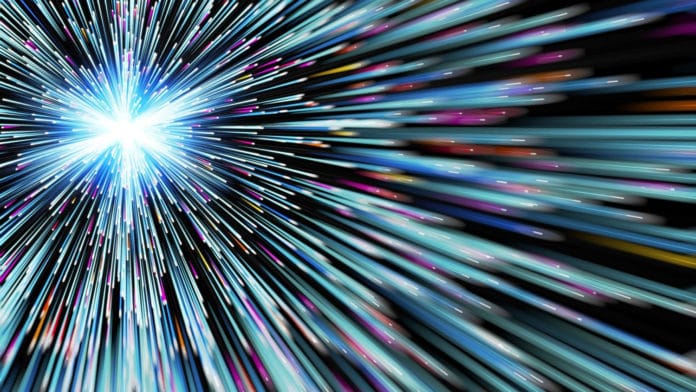As neutrinos travel through space, they shift between three flavors or types, each of which has unique properties. Experiments (MicroBooNE and DUNE) that identify neutrinos use a low-noise liquid-argon time projection chamber (LArTPC)—a sophisticated detector that captures neutrino signals. Understanding these strange particles could lead to discovering some of the universe’s greatest mysteries.
MicroBooNE physicists have been refining LArTPC techniques for large-scale detectors at DUNE. A team effort led by scientists at DOE’s Brookhaven National Laboratory, in collaboration with researchers from Yale University and Louisiana State University, has further refined those techniques. They measured a comprehensive set of the energy-dependent neutrino-argon interaction cross-sections.
Brookhaven Lab physicist Xin Qian, leader of Brookhaven’s MicroBooNE physics group, said, “The neutrino-argon cross-section represents how argon nuclei respond to an incident neutrino as those in the neutrino beam produced by MicroBooNE or DUNE. Our ultimate goal is to study the properties of neutrinos, but first, we need to understand better how neutrinos interact with the material in a detector, such as argon atoms.”
The Deep Underground Neutrino Experiment (DUNE) is a neutrino experiment under construction. It is a leading-edge, international experiment for neutrino science and proton decay studies.
DUNE will probe one of the significant properties of neutrino: how the particles oscillate between three distinct “flavors”: muon neutrino, tau neutrino, and an electron neutrino.
It is clear to scientists that oscillations depend on neutrinos’ energy, among other parameters. However, it isn’t easy to estimate that energy.
With neutrino interaction, there is a large energy spread within every neutrino beam. Determining the detailed energy-dependent cross-sections offers scientists an essential piece of information to study neutrino oscillations.
Brookhaven Lab postdoc Wenqiang Gu said, “Once we know the cross-section, we can reverse the calculation to determine the average neutrino energy, flavor, and oscillation properties from many interactions.”
The team devised a new method for extracting the detailed energy-dependent cross-section to do so.
London Cooper-Troendle, a graduate student from Yale University stationed at Brookhaven Lab through DOE’s Graduate Student Research Program, said, “Previous techniques measured the cross-section as a function of variables that are easily reconstructed. For example, suppose you are studying a muon neutrino. In that case, you generally see a charged muon coming out of the particle interaction, and this charged muon has well-defined properties like its angle and energy. So, one can measure the cross-section as a function of the muon angle or energy. But without a model that can accurately account for “missing energy,” a term we use to describe additional energy in the neutrino interactions that can’t be attributed to the reconstructed variables, this technique would require experiments to act conservatively.”
Louisiana State University assistant professor Hanyu Wei, previously a Goldhaber fellow at Brookhaven, said, “We added a new constraint to significantly improve the mathematical modeling of neutrino energy reconstruction.”
The team used experimental data to validate this newly constrained model, resulting in the first detailed energy-dependent neutrino-argon cross-section measurement.
Gu said, “The neutrino-argon cross-section results from this analysis can distinguish between different theoretical models for the first time.”
While physicists anticipate that DUNE will improve cross-section measurements, the MicroBooNE collaboration’s approaches will serve as a platform for future research. The current cross-section measurement is already in place to aid further theoretical model development.
Journal Reference:
- P. Abratenko et al. First Measurement of Energy-Dependent Inclusive Muon Neutrino Charged-Current Cross Sections on Argon with the MicroBooNE Detector. Physical Review Letters, 2022; DOI: 10.1103/PhysRevLett.128.151801
